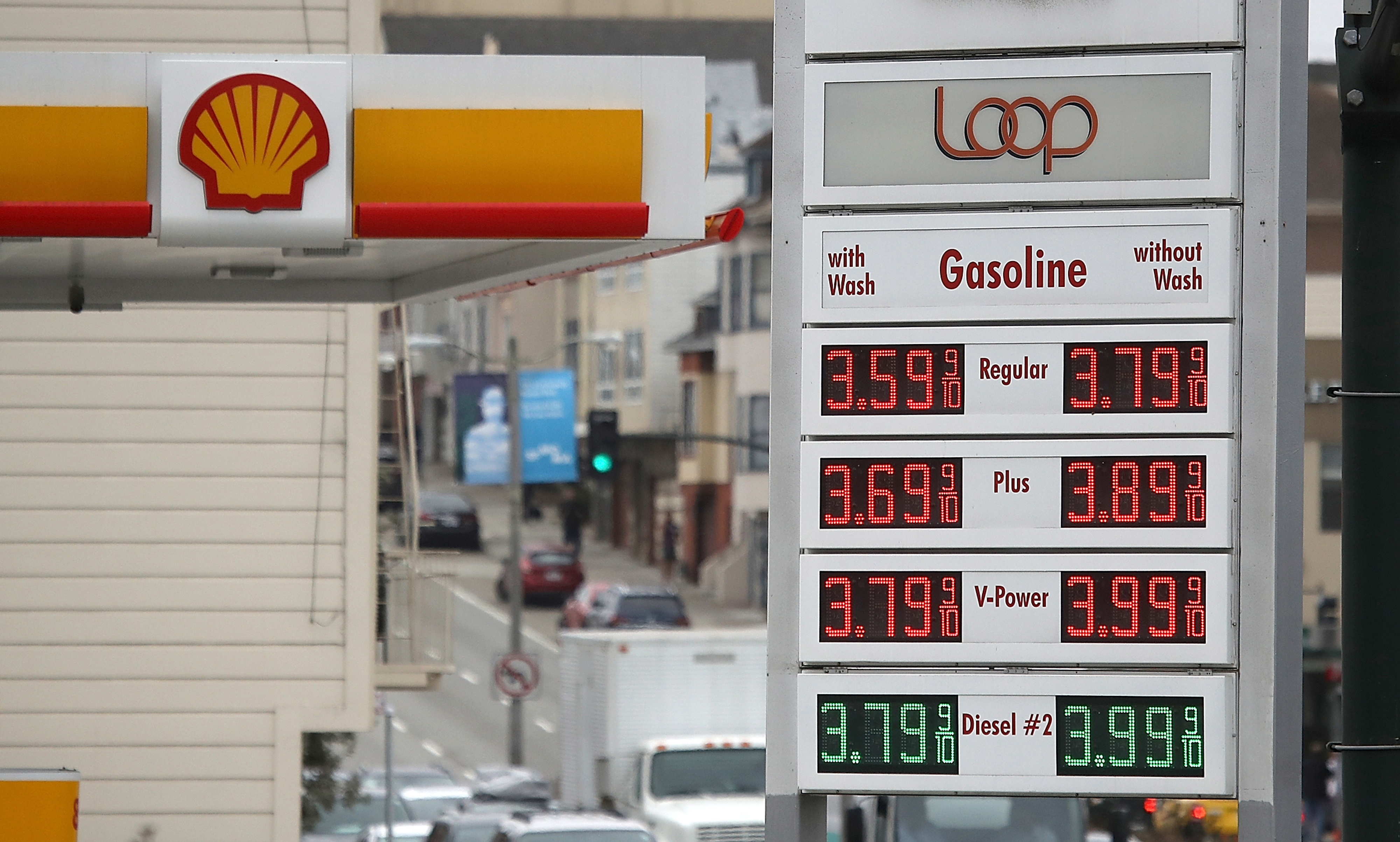August gasoline prices keep US consumer inflation rising
Higher gasoline prices, like these at a Shell gas station in San Francisco, California, helped boost US consumer inflation in August
(JUSTIN SULLIVAN)
Washington (AFP) – Gasoline prices kept US consumer inflation rising in August for the fifth straight month but there were some signs inflation was cooling, the Labor Department reported Thursday.
In addition to mounting energy costs, shelter and airline fares also rose but an annual measure of inflation retreated from its recent six-year highs.
The Consumer Price Index, which tracks costs for household goods and services, rose 0.2 percent for the month, which matched analyst forecasts and was the same as the increase recorded in July.
The gasoline index jumped three percent while electricity costs rose 0.3 percent.
On an annual basis, the index rose 2.7 percent, down from the 2.9 percent recorded in July, which was the highest since 2012.
Excluding volatile food and fuel prices, the “core” index rose only a token 0.1 percent, down from July’s 0.2 percent and half the increase economists were expecting. Year-on-year, this measure slowed by two tenths to 2.2 percent.
The Federal Reserve is widely expected to raise interest rates later this month to keep inflation from climbing too fast.
The central bank’s preferred inflation measure, the Personal Consumption Expenditures price index, has been rising steadily since the spring, however.
Ian Shepherdson of Pantheon Macroeconomics said the report showed the immediate threat of inflation was limited.
“The Fed is raising interest rates because it fears the falling unemployment rate threatens future inflation, not because it is scared of the immediate outlook,” he said in a client note.
For the CPI, price pressures were weak in important categories. Prices for apparel, medical care, communications and personal care all fell.
Year on year, August saw an increase of only 1.5 percent in medical care, the smallest recorded increase since 1950.
Meanwhile, checking account services jumped 10 percent over August of 2017, their largest ever increase.
In a separate indicator also released Thursday, the Labor Department also reported that inflation-adjusted average hourly wages had risen 0.1 percent in August, the same increase recorded in each of the prior three months after an extended period of weakness.
Year-on-year, “real” average hourly pay was up only 0.2 percent when adjusted for inflation.
Disclaimer: This story has not been edited by Siliconeer and is published from a syndicated feed. Siliconeer does not assume any liability for the above story. Validity of the above story is for 7 Days from original date of publishing. Content copyright AFP.


